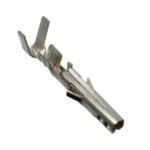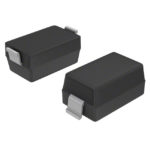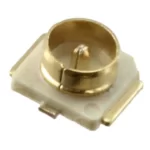Demystifying Capacitors: Understanding Their Purpose in Electronics
In this article, I will demystify capacitors and help you understand their purpose, types, applications, selection, maintenance, and troubleshooting.
Introduction to Capacitors
A capacitor is an electronic component that stores electric charge. It consists of two conductive plates separated by a dielectric material. When a voltage is applied to the capacitor, one plate becomes positively charged and the other negatively charged. The capacitor stores this charge and releases it when the voltage is removed. Capacitors are used in a variety of electronic circuits and devices.
What is the Purpose of a Capacitor?
The purpose of a capacitor is to store electric charge and release it when needed. Capacitors are used in electronic circuits to filter, smooth, and regulate voltage, as well as to store energy for short periods of time. They are also used in timing circuits, oscillators, and filters. Capacitors can help reduce noise in electronic circuits and stabilize voltage.
Understanding the Different Types of Capacitors
There are many types of capacitors, each with its own characteristics and applications. The most common types of capacitors are ceramic, electrolytic, tantalum, film, and supercapacitors.
Ceramic capacitors are the most common type of capacitor. They are small, inexpensive, and have a high capacitance range. They are used in high-frequency applications, as well as in bypass and decoupling circuits.
Electrolytic capacitors are polarized capacitors that have a large capacitance range. They are used in power supply circuits and audio circuits. Tantalum capacitors are also polarized capacitors that have a high capacitance and low leakage current. They are used in power supply circuits and audio circuits.
Film capacitors are non-polarized capacitors that have a low capacitance range. They are used in high-frequency circuits and audio circuits. Supercapacitors are high-capacitance capacitors that can store a large amount of energy. They are used in energy storage applications.
Capacitor Applications in Electronics
Capacitors are used in a variety of electronic circuits and devices. They are used in power supplies, audio circuits, radio circuits, timing circuits, oscillators, filters, and many other applications. Capacitors can help reduce noise in electronic circuits, stabilize voltage, and store energy for short periods of time.
In power supply circuits, capacitors are used to filter and smooth the output voltage. They can help reduce voltage ripple and noise, as well as improve the efficiency of the power supply. In audio circuits, capacitors are used to block DC voltage and allow AC voltage to pass through. They can help improve the quality of the audio signal and reduce noise.
In radio circuits, capacitors are used to tune the frequency of the circuit. They can help select the desired frequency and reject unwanted frequencies. In timing circuits, capacitors are used to control the timing of the circuit. They can help control the frequency of the circuit and the duration of the pulses.
Capacitor Selection and Specifications
When selecting a capacitor for a circuit, it is important to consider the capacitance, voltage rating, temperature rating, and tolerance. The capacitance is the amount of charge that the capacitor can store. The voltage rating is the maximum voltage that the capacitor can withstand. The temperature rating is the range of temperatures that the capacitor can operate in. The tolerance is the amount of variation in capacitance that is allowed.
The capacitance of a capacitor is measured in farads (F), but capacitors are usually available in smaller units such as microfarads (µF), nanofarads (nF), and picofarads (pF). The voltage rating is usually marked on the capacitor, and it is important to select a capacitor with a voltage rating that is higher than the maximum voltage in the circuit.
The temperature rating is important because capacitors can degrade at high temperatures. The tolerance is important because capacitors can vary in their capacitance, and it is important to select a capacitor with a tolerance that is suitable for the circuit.
Capacitor Maintenance and Troubleshooting
Capacitors are generally reliable and require little maintenance. However, if a capacitor fails, it can cause problems in the circuit. The most common problems with capacitors are leakage, short circuit, and open circuit.
Leakage occurs when the dielectric material breaks down and allows current to flow between the plates. Short circuit occurs when the two plates of the capacitor are connected, either by a fault or by a manufacturing defect. Open circuit occurs when the dielectric material breaks down and the capacitor no longer functions.
If a capacitor fails, it should be replaced with a capacitor that has the same specifications. It is important to follow the manufacturer’s recommendations for capacitor replacement.
Common Capacitor Problems and How to Fix Them
One common problem with capacitors is electrolyte leakage. This can be caused by age, heat, or overvoltage. If a capacitor is leaking, it should be replaced.
Another common problem with capacitors is short circuit. This can be caused by a manufacturing defect or by a fault in the circuit. If a capacitor is shorted, it should be replaced.
Open circuit is another common problem with capacitors. This can be caused by age or by overvoltage. If a capacitor is open, it should be replaced.
Capacitor Safety Precautions
Capacitors can store a large amount of energy, and they can be dangerous if not handled properly. It is important to discharge capacitors before handling them. Capacitors should be discharged using a resistor, and the voltage should be checked using a multimeter before handling.
When working with high voltage circuits, it is important to use safety equipment such as gloves, safety glasses, and a safety mat. It is also important to follow the manufacturer’s recommendations for safe handling of capacitors.
Capacitor Trends and Innovations
Capacitor technology is constantly evolving, and new innovations are being developed. One recent innovation is the development of graphene-based supercapacitors. These supercapacitors have a high energy density and can store a large amount of energy in a small space.
Another trend in capacitor technology is the use of organic materials in capacitors. These organic capacitors have a low environmental impact and can be manufactured using sustainable materials.
Conclusion: The Importance of Capacitors in Electronics
In conclusion, capacitors are one of the most important components in electronics. They are used in a variety of circuits and devices, and they play a crucial role in filtering, smoothing, and regulating voltage. It is important to understand the different types of capacitors, their applications, and their specifications in order to select the right capacitor for a circuit. Capacitors require little maintenance, but it is important to follow safety precautions when handling them. Finally, capacitor technology is constantly evolving, and new innovations are being developed that will continue to improve the performance and efficiency of electronic devices.


